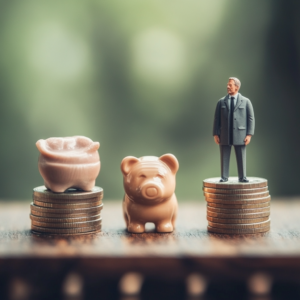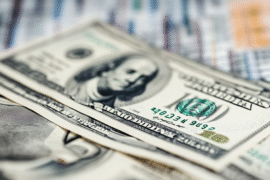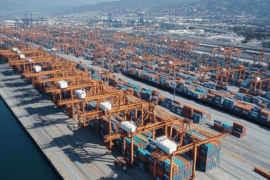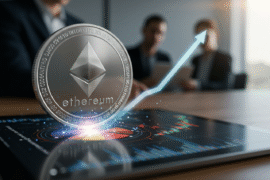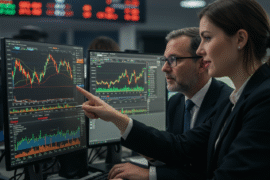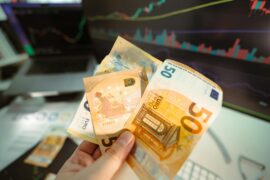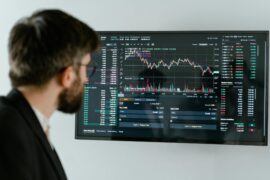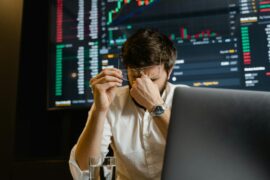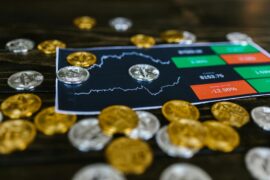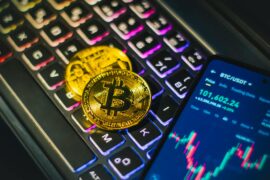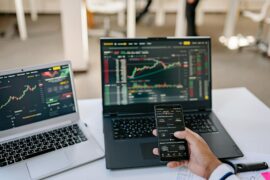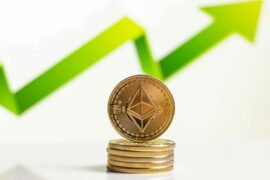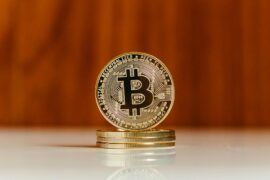This article may contain references to products or services from one or more of our advertisers or partners. We may receive compensation when you click on links to those products or services. Nonetheless, our opinions are our own.
As you navigate the complex world of investment, whether silver will rise in value is likely on your mind. With its unique position as both a precious metal and an industrial commodity, silver has captured the attention of investors and analysts alike. As you consider your options for 2025, exploring the various factors that could influence silver prices in the coming years is essential. From global economic trends and shifts in demand to geopolitical tensions and advancements in technology, multiple elements can play a pivotal role in the fate of silver. We’ll dive into our predictions for silver’s value in 2025, backed by current market insights and expert analyses, helping you make informed decisions for your investment portfolio. Whether you’re a seasoned investor or just starting, understanding the dynamics at play can give you a clearer outlook on what lies ahead for silver.
- Understanding the Factors That Could Drive Silver Prices in 2025
- Evaluating Historical Trends in Silver Investment
- Exploring the Role of Industrial Demand in Silver’s Future
- How Economic Indicators May Influence Silver Value
- Practical Tips for Investing in Silver
- Preparing Your Portfolio for Potential Gains in Silver
- Frequently Asked Questions
- Recommended Reads
Understanding the Factors That Could Drive Silver Prices in 2025
As you look ahead to 2025, several key factors could substantially influence silver prices. Understanding these elements can better equip you to make informed investment decisions. Consider the following:
- Global Economic Conditions: Economic growth or recession affects industrial demand for silver, especially in sectors like electronics and renewable energy.
- Inflation Rates: Silver is often seen as a hedge against inflation; rising prices could push investors toward precious metals.
- Technological Advancements: Innovations in solar energy and electric vehicle manufacturing might increase silver demand, driving prices upwards.
- Monetary Policy: Central banks’ policies on interest rates and currency valuations can impact investor sentiment toward silver.
Monitor supply chain dynamics, such as mining output and geopolitical issues affecting availability. The interplay between these influences will ultimately shape silver’s market trajectory as you make your investment choices.
Factor Impact on Silver Prices
| Factor | Potential Impact on Silver Prices |
|---|---|
| Global Economic Conditions | Higher demand during growth, lower demand during recession |
| Inflation Rates | Increased purchasing as a safe haven |
| Technological Advancements | Higher usage in solar and EV sectors boosts demand |
| Monetary Policy | Potential shift toward commodities if rates drop |
Evaluating Historical Trends in Silver Investment
Examining historical trends in silver investment can help you understand the market’s behavior. Silver has strongly responded to economic conditions, frequently acting as a safe haven during financial uncertainty. Historically, investors have turned to silver when inflation rises or when other investments, like stocks and bonds, experience volatility. Silver may gain more attention as a reliable asset if inflation continues to climb or geopolitical tensions persist.
Key Trends to Consider:
- Market Cycles: Silver prices have experienced considerable booms and busts. Understanding these cycles can inform your investment timing.
- Demand Factors: Industrial demand, particularly in electronics and renewable energy, has consistently influenced silver prices. Rising demand in these sectors might signal potential price increases.
- Investment Trends: Observing shifts in investor sentiment toward physical versus paper silver can provide insight into future price movements.
Silver’s Average Annual Return Over Different Decades
| Decade | Average Annual Return (%) |
| 1970s | 27.7 |
| 1980s | 6.2 |
| 1990s | -0.5 |
| 2000s | 15.3 |
| 2010s | 5.6 |
Analyzing these trends may help you position yourself for potential opportunities in 2025.
Exploring the Role of Industrial Demand in Silver’s Future
Considering the potential trajectory of silver prices, it’s essential to understand the role of industrial demand. Silver is not just a precious metal but crucial in various industries, including electronics, solar energy, and medical applications. This diverse demand creates a foundation for silver’s future price movements.
Key Sectors to Watch:
- Electronics: Silver is widely used in smartphones, PC manufacturing, and wearable technology, making consumer electronics a significant demand driver.
- Renewable Energy: Silver’s critical role in solar photovoltaic cells means that as global investments in renewable energy continue to rise, so will silver demand.
- Medical Industry: Silver’s antimicrobial properties make it a staple in medical instruments and devices, mainly as healthcare technology evolves.
Understanding how these sectors operate can help you make informed investment choices. Monitor industry reports and market analyses to understand the shifts in these demands, as they will surely impact the dynamics of silver’s price in the upcoming years.
How Economic Indicators May Influence Silver Value
Economic indicators play a significant role in influencing silver prices. Factors such as inflation rates, currency strength, and interest rates are particularly important.
- Inflation Rate: Rising inflation often increases the appeal of silver as a protective asset.
- Monetary Policy: Central banks’ policies on interest rates can influence investor sentiment toward silver.
- Geopolitical Stability: Political uncertainty can increase demand for precious metals like silver.
- Industrial Demand: Silver’s use in technology and industry can drive up its value based on market needs.
Economic Indicators and Their Impact on Silver
| Indicator | Potential Impact on Silver Prices |
| High Inflation | Increases demand |
| Low Interest Rates | Increases appeal |
| Strong US Dollar | Can decrease demand |
Practical Tips for Investing in Silver
Investing in silver can be rewarding, but it requires thoughtful preparation and strategy. Here are some practical tips to help you navigate this market:
- Understand the Market Dynamics: Silver prices are influenced by factors such as industrial demand, currency strength, and geopolitical stability.
- Choose Your Investment Type: Invest in physical silver (coins or bars) or silver-related financial products (ETFs or mining stocks). Each option has its own risks and benefits.
- Diversify Your Holdings: Spreading your investments across different assets, including silver, can safeguard your portfolio against market volatility.
- Stay Updated: Follow market trends and economic news that could influence silver prices. Staying informed will help you position your investments wisely.
Investment Types and Risk Levels
| Investment Type | Risk Level | Liquidity |
| Silver ETFs | Medium | High |
| Physical Silver | Medium | Low |
Preparing Your Portfolio for Potential Gains in Silver
To prepare effectively for potential gains in silver, start by diversifying your holdings. This can help mitigate risks while maximizing potential returns. Here are a few steps to enhance your investment approach:
- Assess Your Current Holdings: Review your existing investments to understand how much exposure you currently have to silver.
- Incorporate Silver ETFs: Exchange-Traded Funds (ETFs) that track silver prices can offer liquidity and diversification without storing physical metal.
- Consider Physical Silver: If you’re comfortable, adding physical silver coins or bullion can provide a tangible asset in your portfolio.
- Stay Informed: Monitor market trends, economic indicators, and geopolitical factors that may impact silver prices. Knowledge is your best asset.
By adopting these strategies, you position yourself to tap into silver’s potential growth in the coming years. Staying proactive and knowledgeable will serve you well as you navigate this investment landscape.
Frequently Asked Questions
What are the key factors influencing silver prices in 2025?
Industrial demand, investment trends, and macroeconomic conditions will influence Silver prices. The growing demand for silver in electronics and renewable energy technologies, especially solar panels, could drive prices higher. Central bank policies and inflation concerns will significantly shape investor sentiment toward precious metals.
How does the demand for silver in technology affect its price?
The demand for silver in technology is crucial to its market dynamics. Industries increasingly incorporate silver into smartphones, electric vehicles, and solar cells. This industrial demand may outstrip supply, potentially leading to higher prices.

Reviewed and edited by Albert Fang.
See a typo or want to suggest an edit/revision to the content? Use the contact us form to provide feedback.
At FangWallet, we value editorial integrity and open collaboration in curating quality content for readers to enjoy. Much appreciated for the assist.
Did you like our article and find it insightful? We encourage sharing the article link with family and friends to benefit as well - better yet, sharing on social media. Thank you for the support! 🍉
Article Title: Will Silver Go Up? Our Predictions for 2025
https://fangwallet.com/2025/03/01/will-silver-go-up-our-predictions-for-2025/The FangWallet Promise
FangWallet is an editorially independent resource - founded on breaking down challenging financial concepts for anyone to understand since 2014. While we adhere to editorial integrity, note that this post may contain references to products from our partners.
The FangWallet promise is always to have your best interest in mind and be transparent and honest about the financial picture.
Become an Insider

Subscribe to get a free daily budget planner printable to help get your money on track!
Make passive money the right way. No spam.
Editorial Disclaimer: The editorial content on this page is not provided by any of the companies mentioned. The opinions expressed here are the author's alone.
The content of this website is for informational purposes only and does not represent investment advice, or an offer or solicitation to buy or sell any security, investment, or product. Investors are encouraged to do their own due diligence, and, if necessary, consult professional advising before making any investment decisions. Investing involves a high degree of risk, and financial losses may occur including the potential loss of principal.
Source Citation References:
+ Inspo

